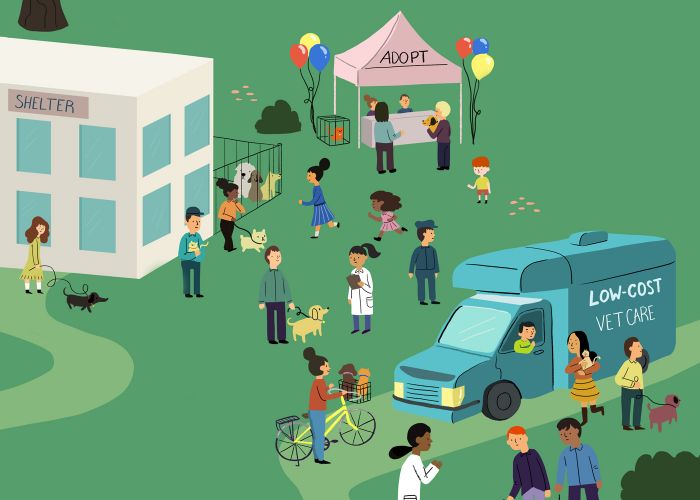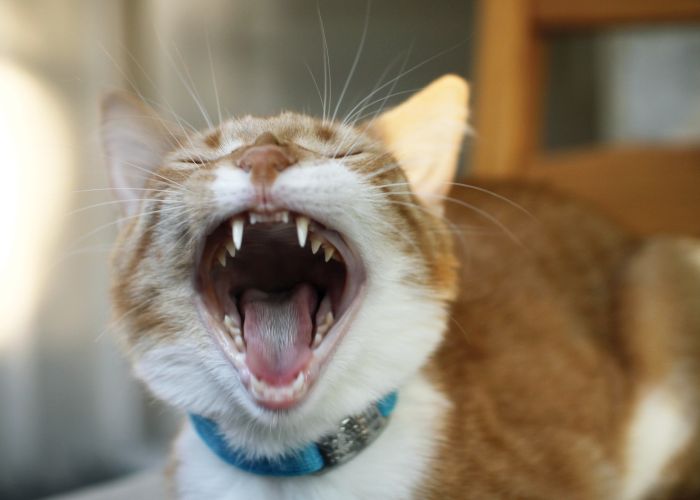Looking back, moving forward
From Shelter Sense to Animal Sheltering to HumanePro
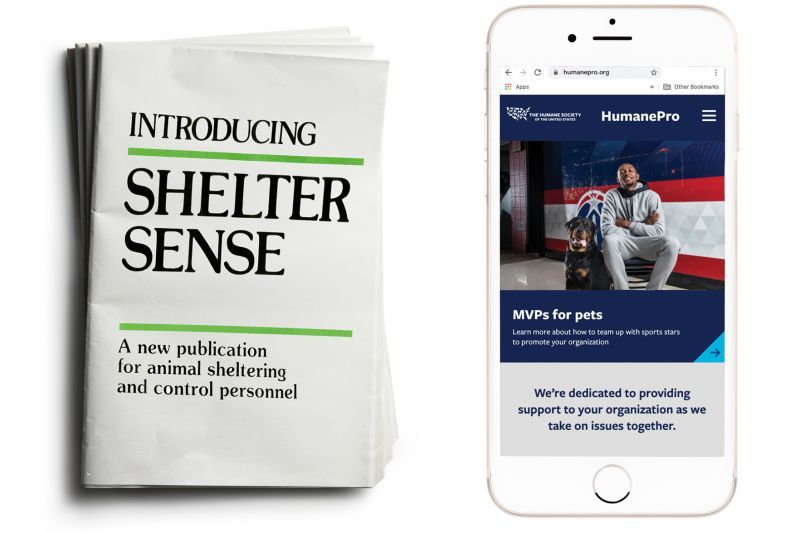
In April 1978, Phyllis Wright sat down at her typewriter to hammer out a 12-page newsletter named Shelter Sense. “We will bring you articles on shelter management and animal control, with how-to-do-it guidelines for handling the tasks of today’s animal control or humane society worker,” wrote Wright, then the animal shelter liaison at Humane World for Animals. “And perhaps most important: We invite you to share your ideas with us.”
At the time, old methods of animal control—like decompression chambers and gunshot— were slowly being outlawed. New norms—like the mandatory sterilization of adopted animals—were being ushered in.
Wright, who also launched the HSUS Animal Control Academy and traveled thousands of miles visiting shelters and conducting trainings, retired in 1991 and died in 1992. But the vision of a professionalized animal welfare field lived on.
Over more than four decades, Shelter Sense—whose name changed to Animal Sheltering in 1996—would highlight policies and strategies that are commonplace today, but which at the time were viewed as groundbreaking (and even radical): female animal control officers, cat declawing bans, cat colony housing, foster care programs, high-volume spay/neuter clinics, shelter animal transport programs, trap-neuter-return, collaboration between public and private shelters, ending breed discrimination, door-to-door pet owner outreach, conversation-based adoption policies, data collection and more.
HumanePro.org will continue those conversations, using what we already know and what we continue to learn about animal sheltering in 2020 and beyond. We will broaden our coverage to help you to resolve human-wildlife conflicts humanely; defend and expand animal protection policies in your communities; and ensure access to pet care for everyone.
It only makes (shelter) sense that a publication that was at the forefront of progressive thought would continue progressing—from a newsletter called Shelter Sense, to a glossy magazine named Animal Sheltering, to an interactive website dubbed HumanePro—but these old school editors couldn’t help but give Animal Sheltering’s print covers the send-off they deserve. We hope the people and pets featured within these paper pages have inspired you and helped you feel less alone in your groundbreaking work. We know that we’ve been inspired by all of you.
“We hope the people and pets featured within these paper pages have inspired you and helped you feel less alone in your groundbreaking work.”
 | August 1979“Cleaning an animal shelter is hard work … but you can make it easier and get good results by establishing an efficient cleaning routine. … A clean shelter will help you offer healthy animals for adoption. Potential adopters visiting the shelter will be able to see that the animals are well cared for and in good condition.” —“Keep it clean!” |
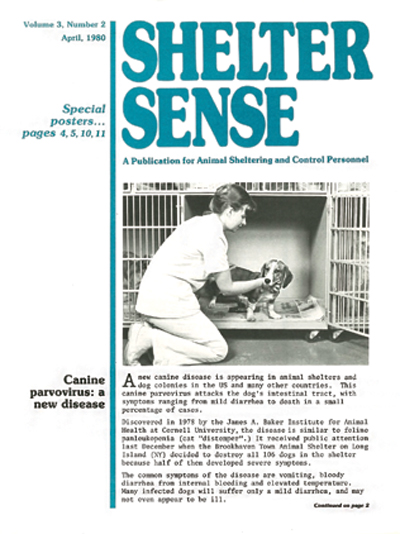 | April 1980“A new canine disease is appearing in animal shelters and dog colonies in the US and many other countries. This canine parvovirus attacks the dog’s intestinal tract, with symptoms ranging from mild diarrhea to death.” —“Canine parvovirus: A new disease” |
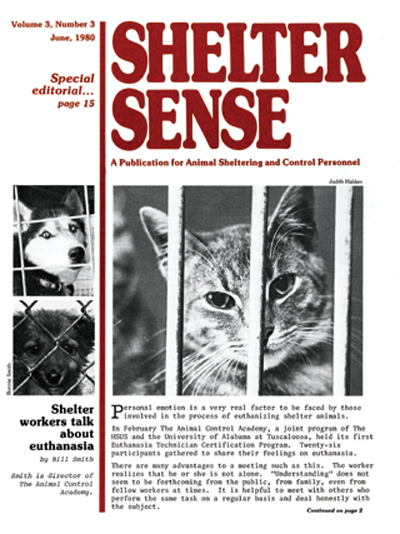 | June 1980“Twenty-six [technicians] gathered to share their feelings on euthanasia. There are many advantages to a meeting such as this. The worker realizes that he or she is not alone. … It is helpful to meet with others who perform the same task on a regular basis and deal honestly with the subject.” —“Shelter workers talk about euthanasia” |
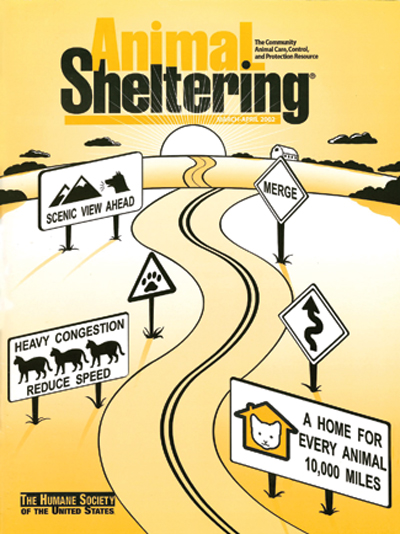 | March/April 2002“Animal shelters are far from immune to the economic and cultural divides that plague U.S. society, and the roadmap for ending euthanasia of healthy, adoptable animals must reflect those differences.” —“A world apart: Navigating the road between dreams and reality” |
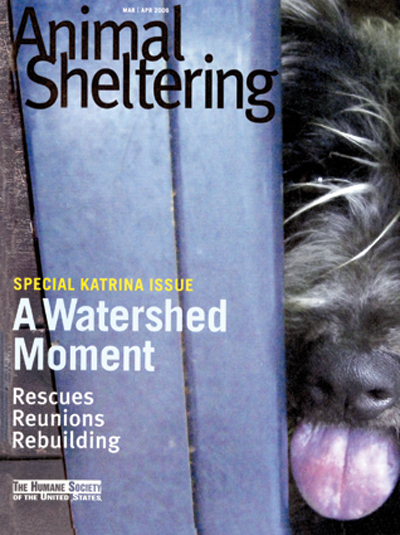 | March/April 2006“In the midst of all the terrible devastation the forces of nature had thrown at them, these people were still looking for their pets. … Sometimes we could find these pets safely ensconced in shelters or foster homes. … Other times we couldn’t. But still, we were thanked, over and over again, by people who didn’t even have a can opener left to their name.” —“The sorrow is in the details,” author and nature writer Nancy Lawson |
 | March/April 2013“The push to reduce pet overpopulation, to relieve suffering, had to expand beyond the animals entering shelters, as hundreds of thousands more were never making it there in the first place.” —“Taking it to the streets” |
 | Spring 2018“We finally figured out that it’s OK that we all do this a little differently. Each of us plays an important role.” —“Not your mother's animal shelter,” Kirsten Vantwoud, former COO, Humane Society of Indianapolis |
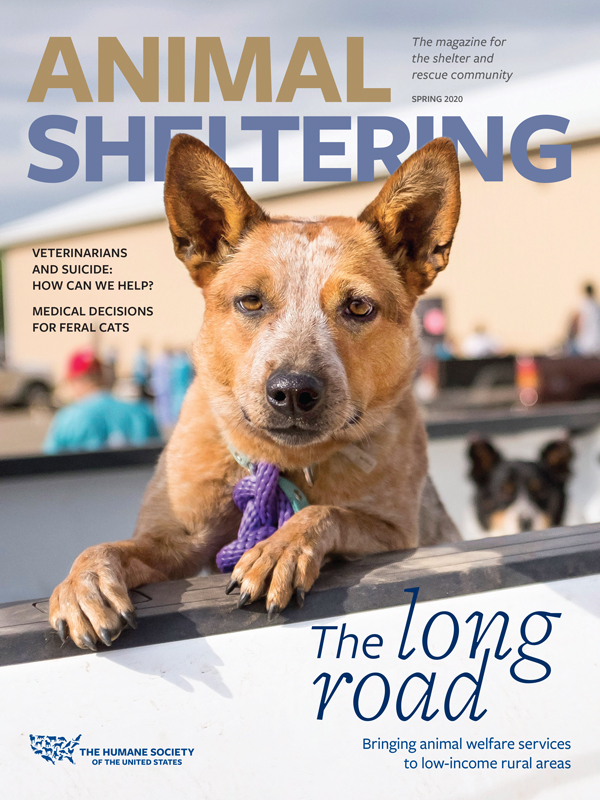 | Spring 2020“It might not be fixing everything all at once. It might be really a long, slow process. But we start in that corner and with each action, each clinic, each event, each program, we’re absolutely helping individual animals and building the base of what can become a community-wide project.” —“The long road,” Windi Wojdak, senior director of Rural Area Veterinary Services |



